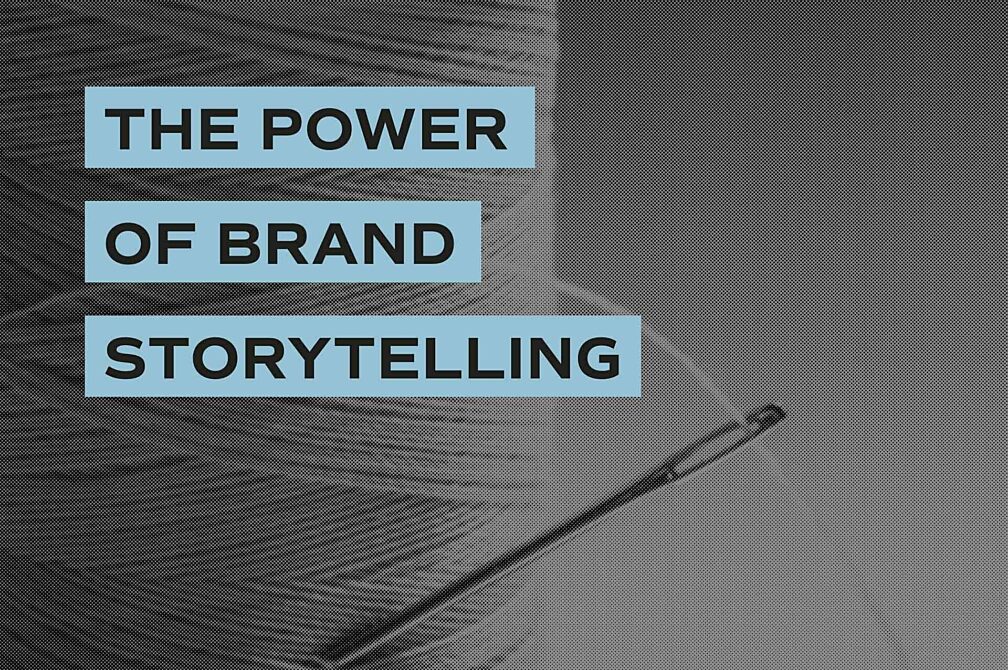Blog
Brand + Advertising

From Profit to Purpose: The Power of Brand Storytelling
During a visit to the NASA Space Center in 1962, President John F. Kennedy encountered a janitor in the hallway and asked what he was doing working so late.
The janitor replied, “I’m helping put a man on the moon, Mr. President.”
Not mopping the floors or building electrical circuits. But putting a man on the moon.
Neil Armstrong’s leap for mankind didn’t begin with a footstep on the lunar surface. It began when a leader with a bold vision inspired a 400,000-person organization to rally around a single purpose. And that unifying story is what fueled one of the greatest achievements in human history.
Defining the brand narrative
The simple-but-purposeful mission of putting a man on the moon stems from an overarching brand narrative: the sole reason for an organization’s existence. It’s used to create meaningful, emotional and value-driven connections between your brand and your customers that ultimately help grow your business. Consider the narrative as the building block for brand strategy and a purpose that’s carefully woven into every piece of a company.
It's easy to wonder: Why focus on developing a brand narrative when there’s already a demand for your offering? Because a brand is no longer defined by its product or services. A brand is made up of every belief, moment, conversation and experience shared between a company and a customer. In fact, consumers are paying just as much attention to what brands stand for as what they sell.
A strong narrative needs to dig into the hearts and minds of your customers to address common pain points, offer a different perspective from the status quo, and connect to larger conversations happening in your industry and the world. This forces us as marketers and business leaders to think about the following questions:
- Why does the brand exist?
- What challenge does our product or service solve?
- Are we cultivating a culture and living our purpose?
- How can we contribute to creating a better society?
Answers to these questions inform and support every business decision moving forward while aligning an organization’s people, processes and overall strategy.
The benefits of brand storytelling
Some of today’s best brands are using narratives to tap into larger, socially conscious movements. Look at REI: a multibillion-dollar retail giant that shuts its doors on Black Friday to invite its 12,000 employees and all of America to #OptOutside together. Why? To connect with nature instead of consumerism. Today, the narrative remains true for new initiatives as REI’s collective community works to fight climate change and reduce environmental impact.
Or Dove, on a mission to help the next generation feel comfortable in their own skin and develop a positive relationship with beauty. The company’s Real Beauty initiative ensures that every woman and girl sees themselves and their stories represented in today’s media and culture. Not only has this truth produced tremendous sales, but it has also become an important cause for more than a decade.
Because these brands are allowing what they promise their customers to guide their every operational move, they’re able to form deep connections while reaping tangible and intangible gains. Here’s how a business can benefit from developing an authentic brand narrative:
- Create an identity. Whether launching a business, new product line or campaign, a narrative helps immensely with goal setting. A unique brand identity humanizes your brand, communicates your value and makes you stand out from the competition.
- Build like-minded teams. It’s no secret: people feel more engaged, productive and loyal when they feel like the work they do matters. When leaders and employees are aligned on what they believe in—and they build a community around it—they become unstoppable.
- Unite your company. Narratives are especially helpful for organizations with different sub-companies, product lines or audience segments. While tone, strategy or tactics might differ on a granular level, the narrative serves as the overarching truth that unifies a brand and creates a cohesive message.
- Stay relevant. A powerful brand narrative allows you to connect with and contribute to larger narratives in the world today—ultimately giving a sense of purpose. While companies may grow and evolve over time, communicating a relevant narrative keeps you relevant as a company.
How these approaches come to life will depend on the type of company you are, but the truths within them remain the same. And with your team now unified behind an identity that truly represents them, there’s no telling where your brand can go—so you might as well aim for the moon.
If you’re looking to put more purpose into your brand’s storytelling, reach out today.
Kristin Johnson